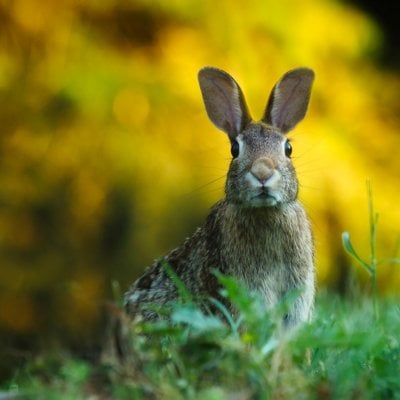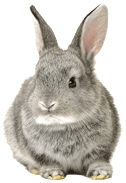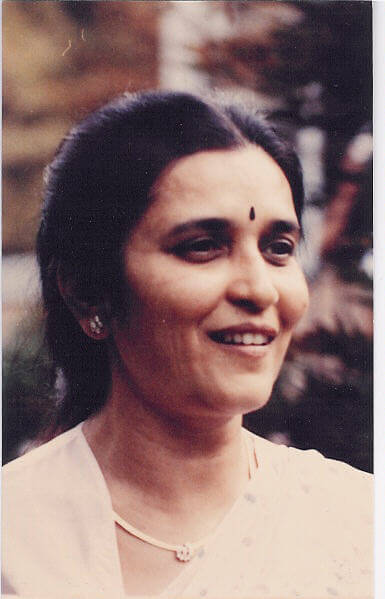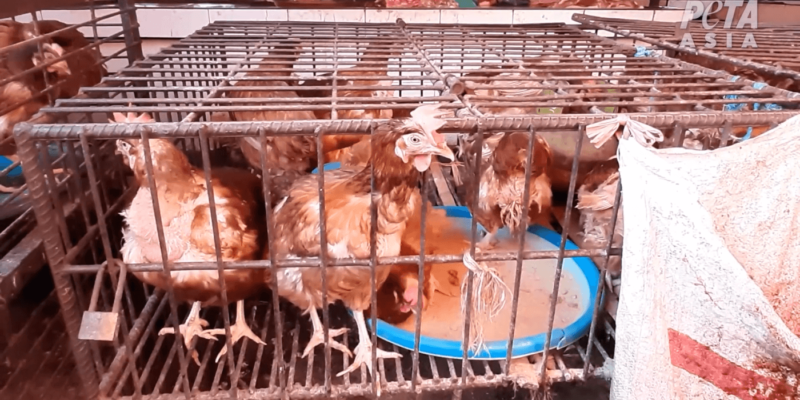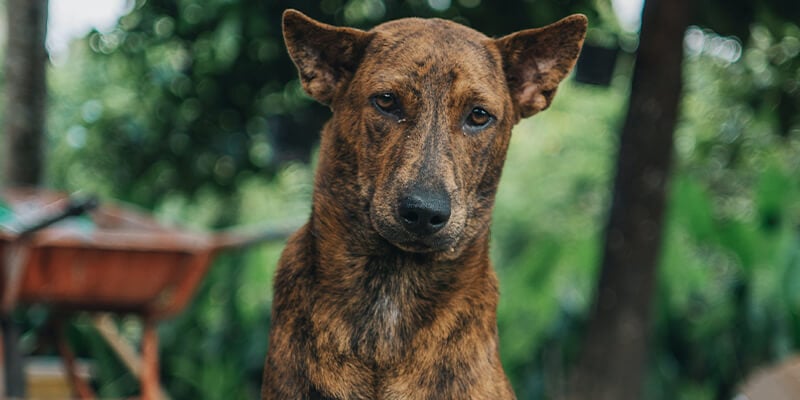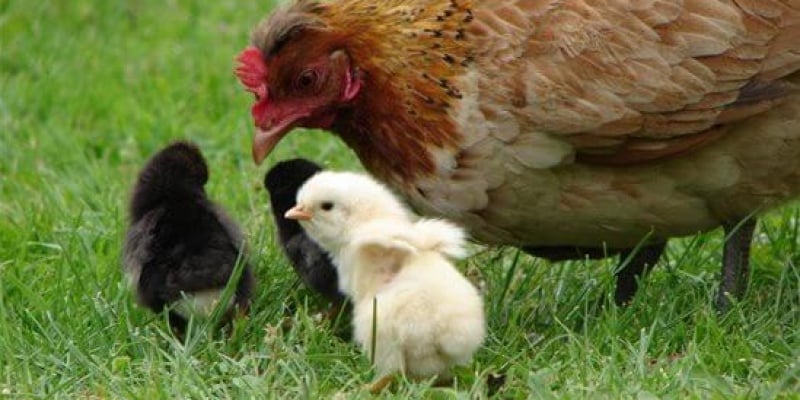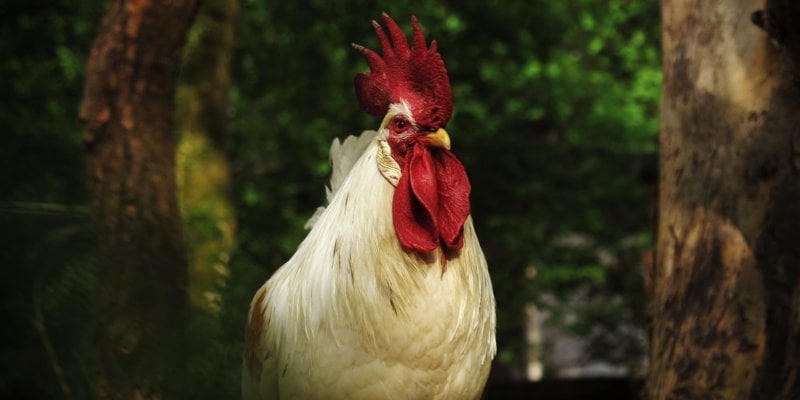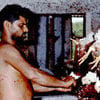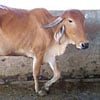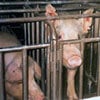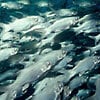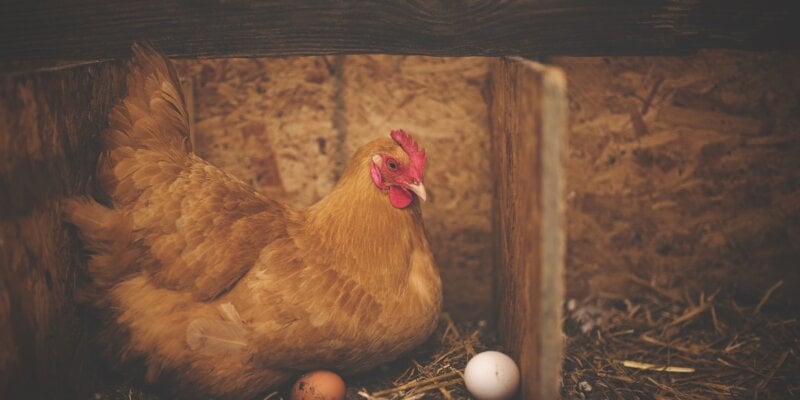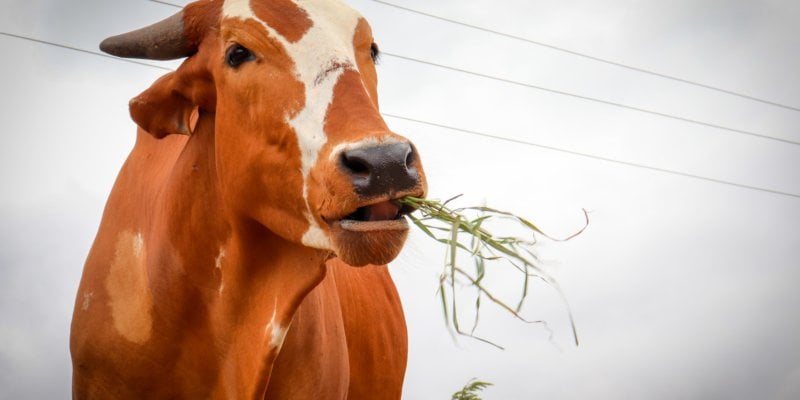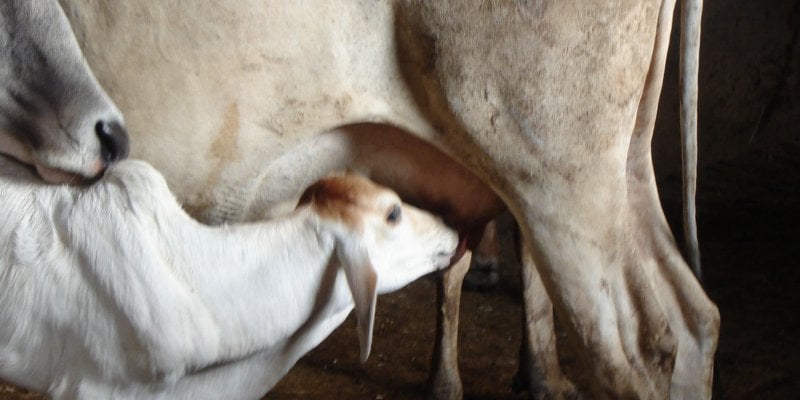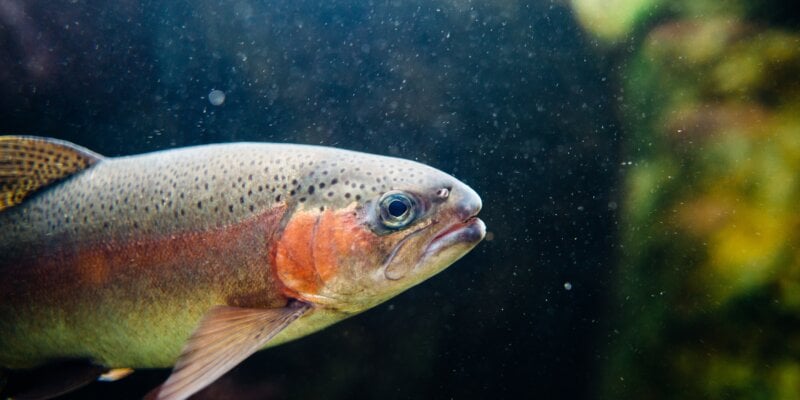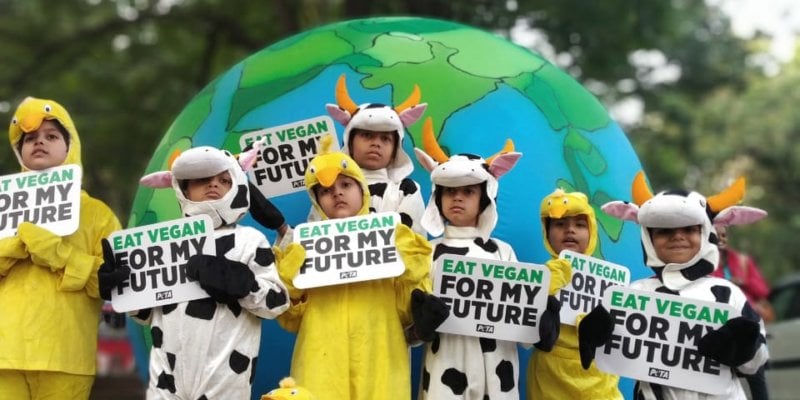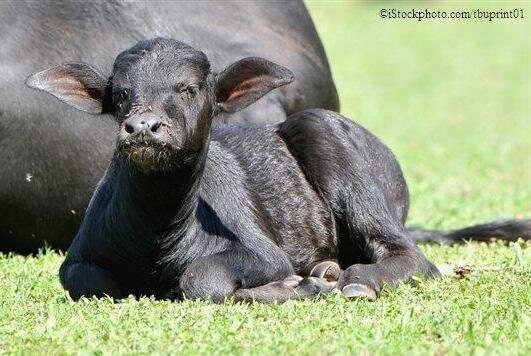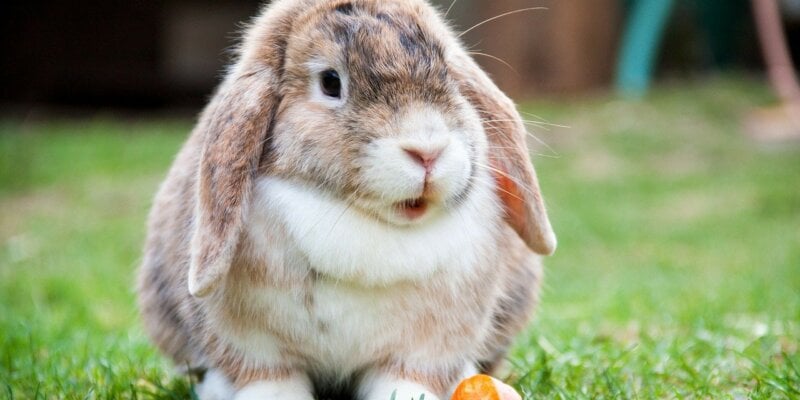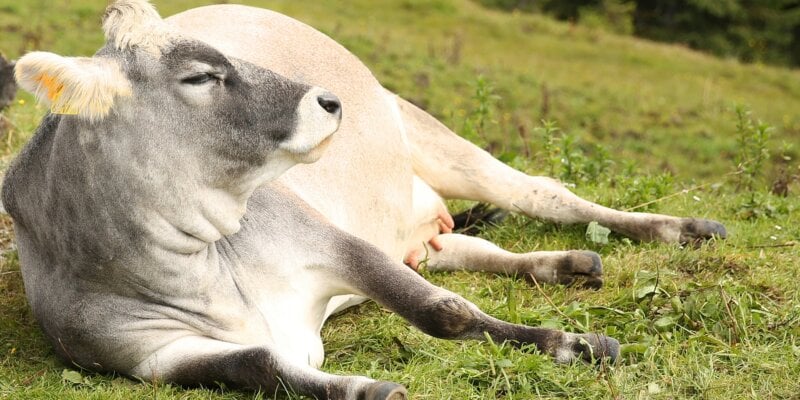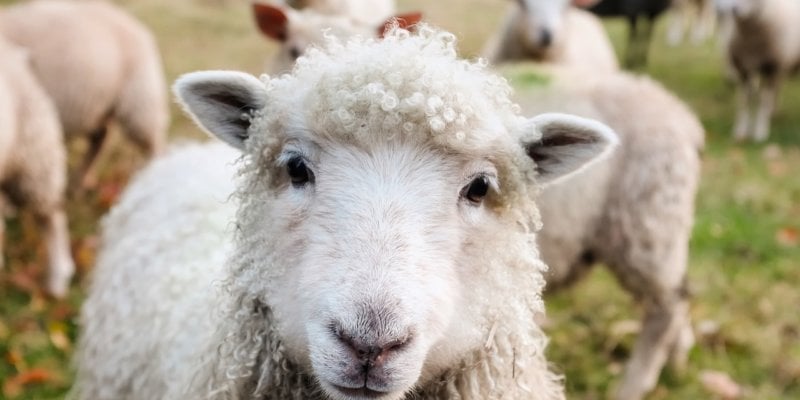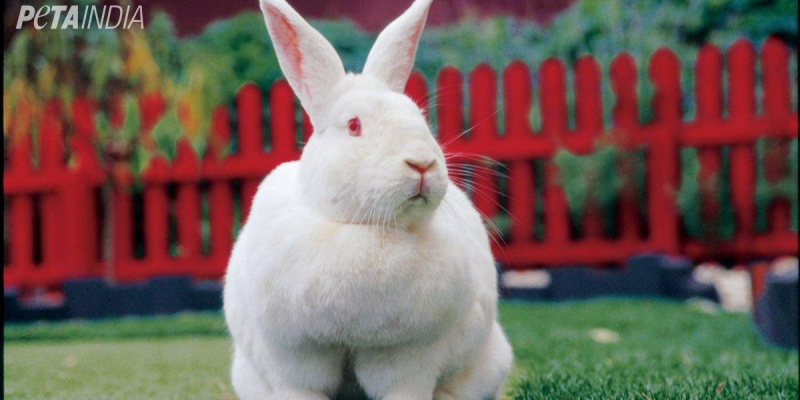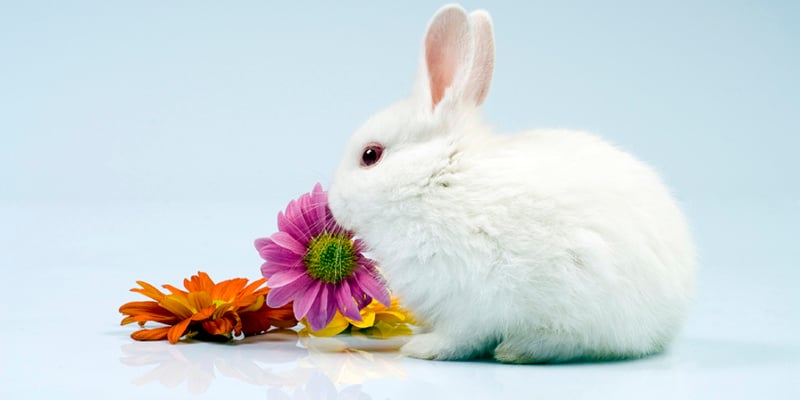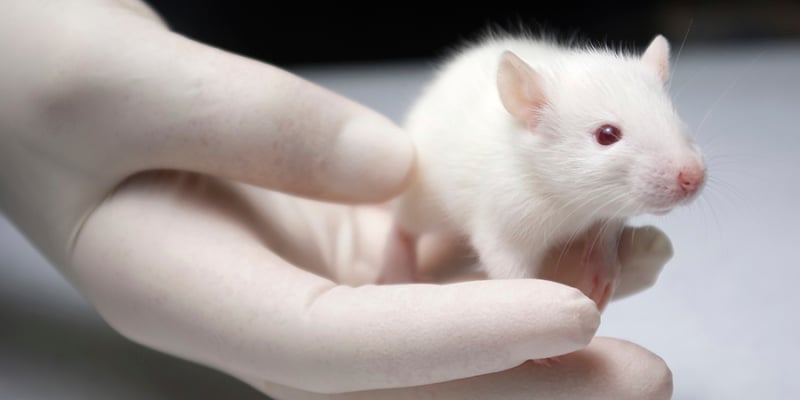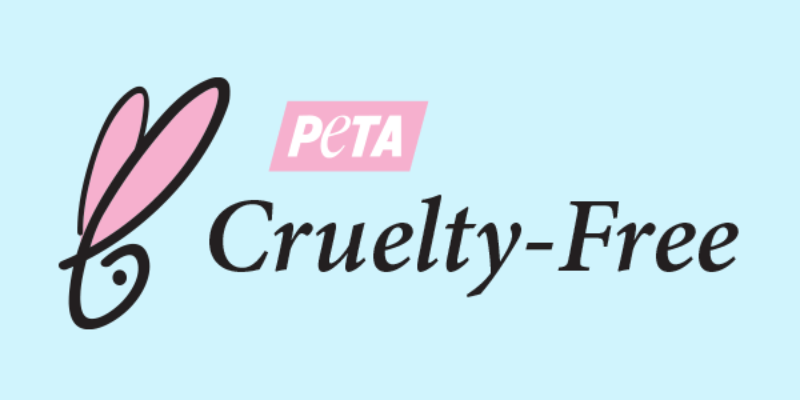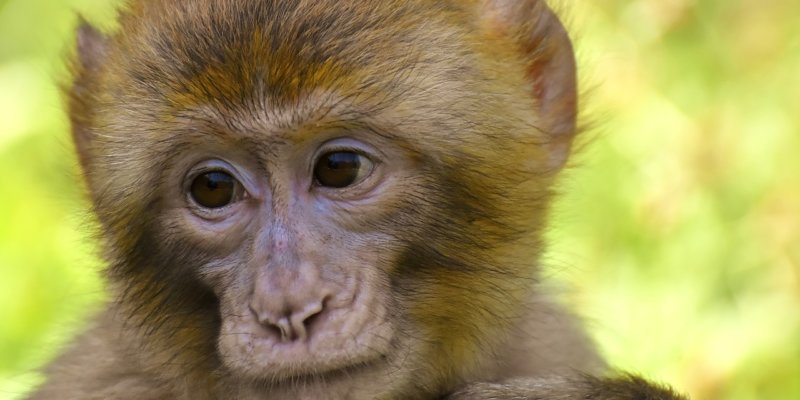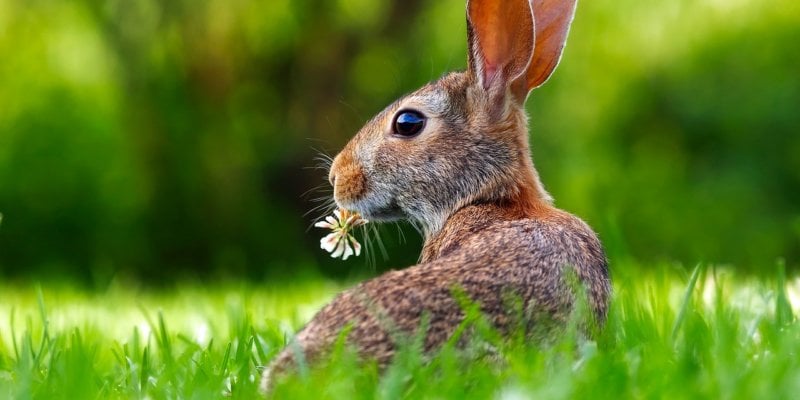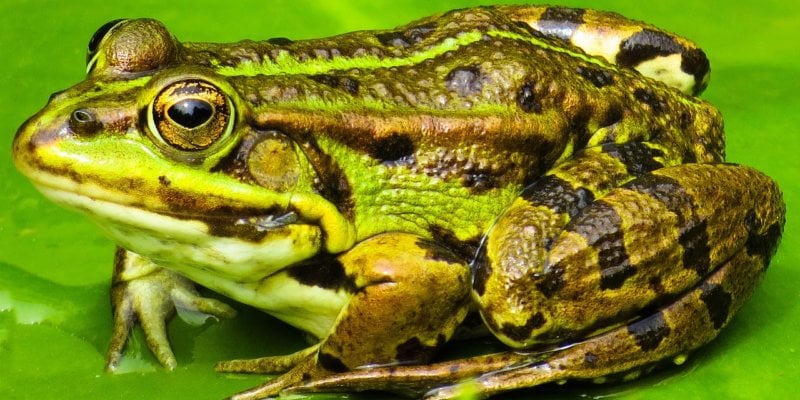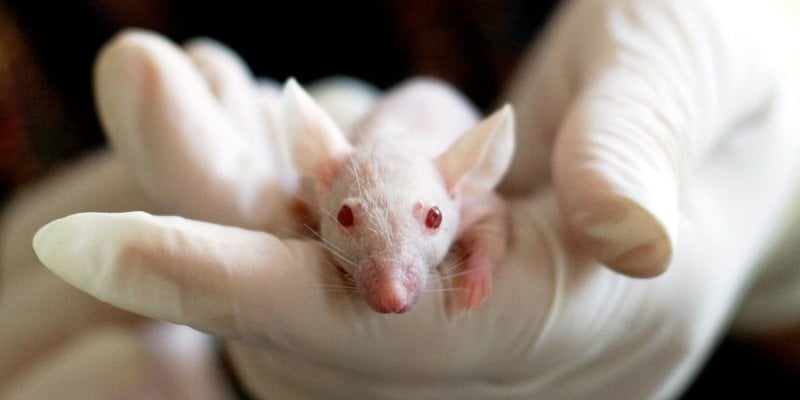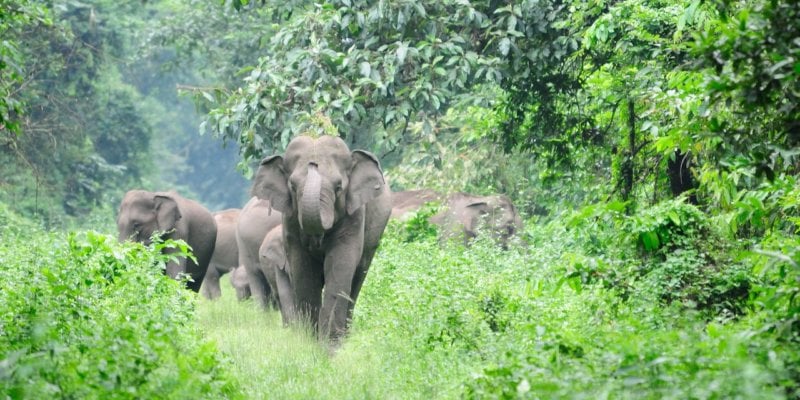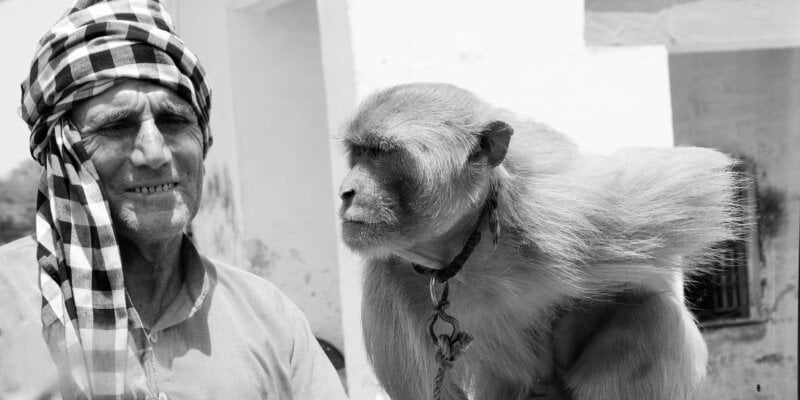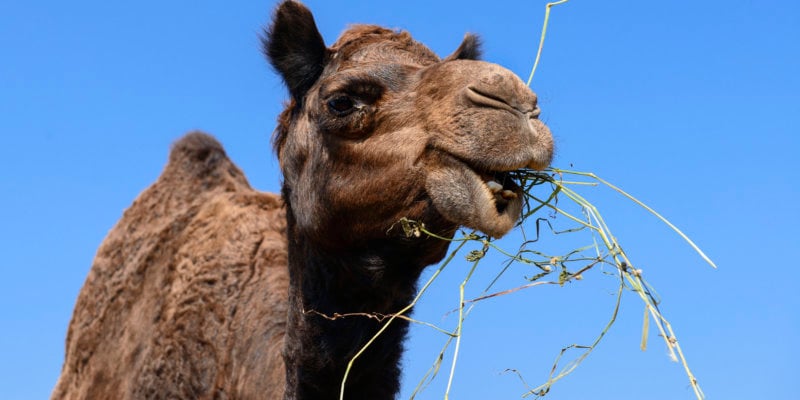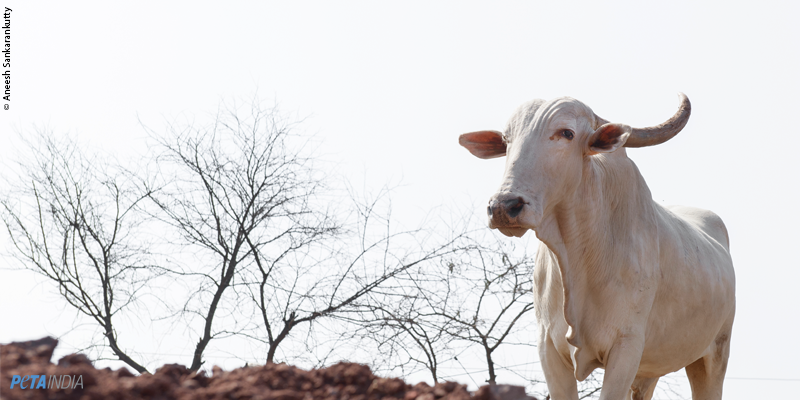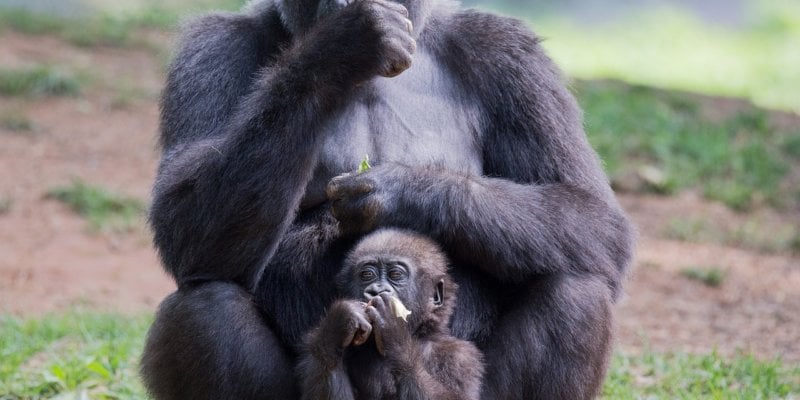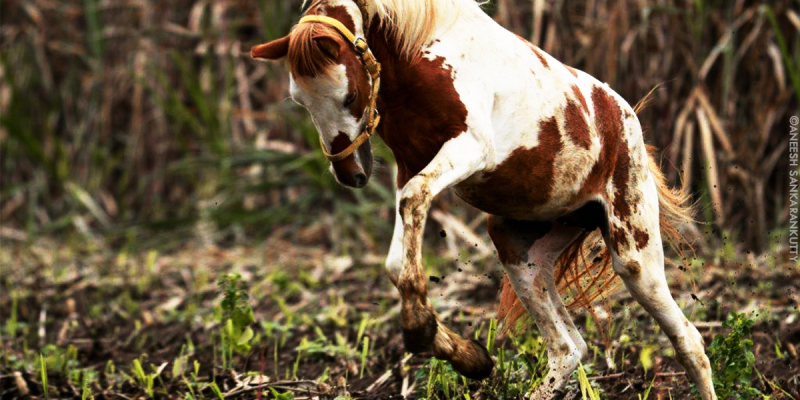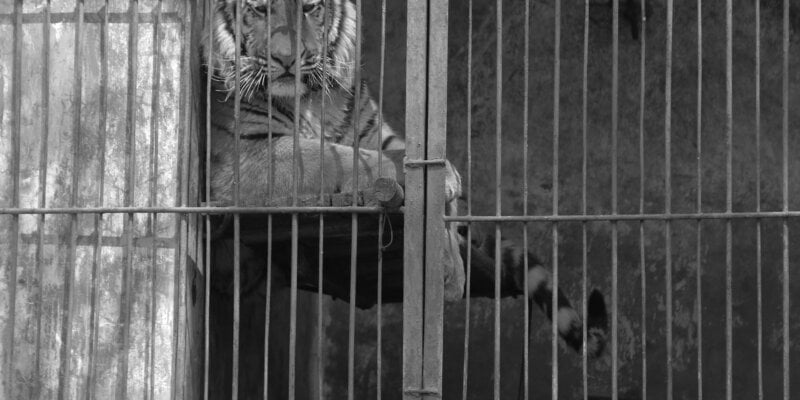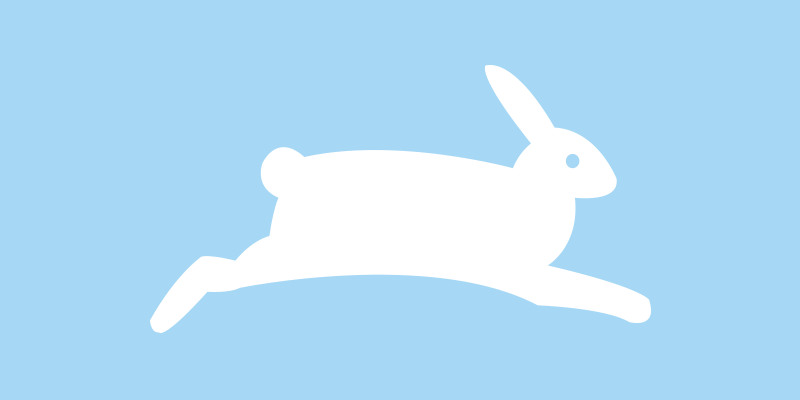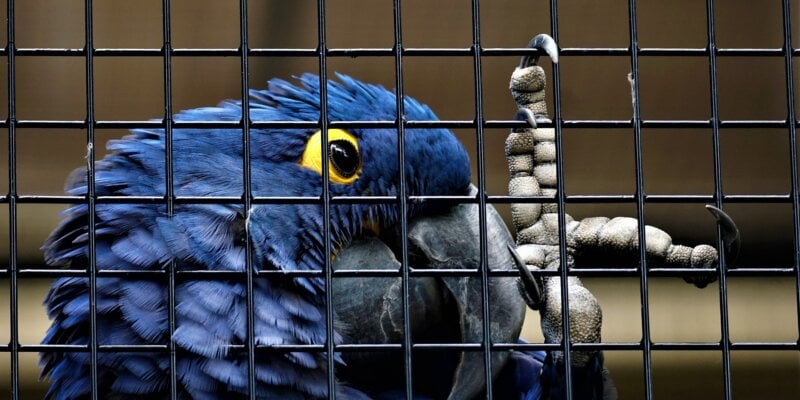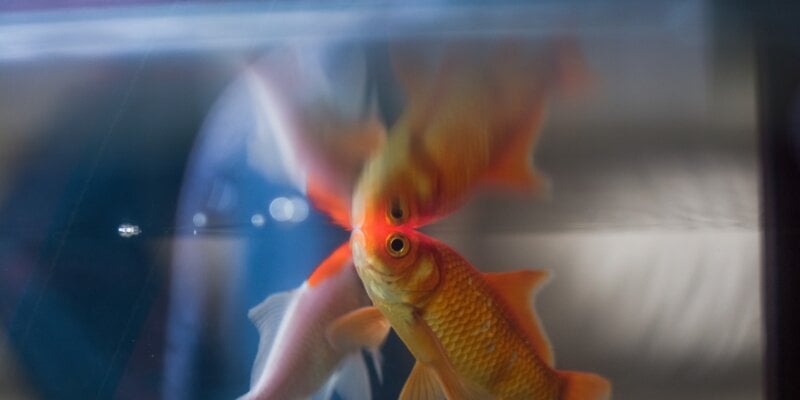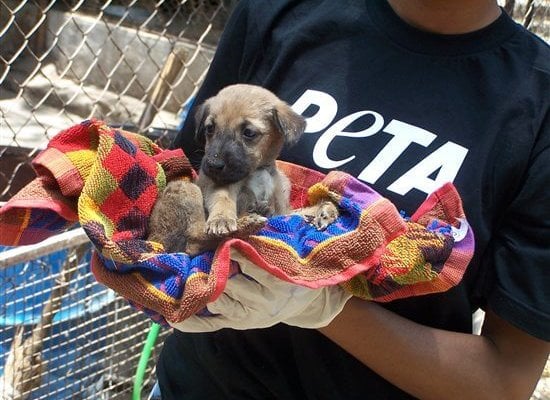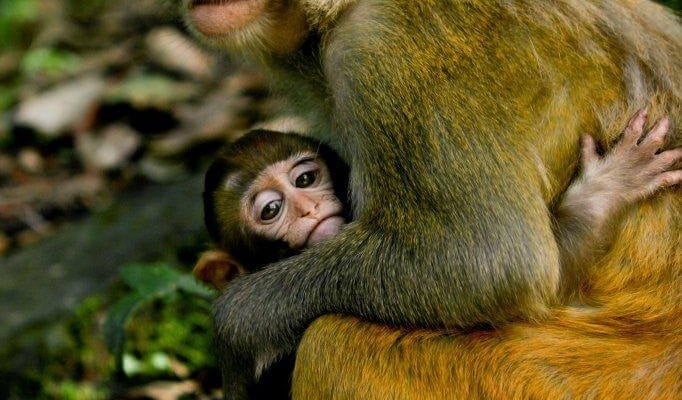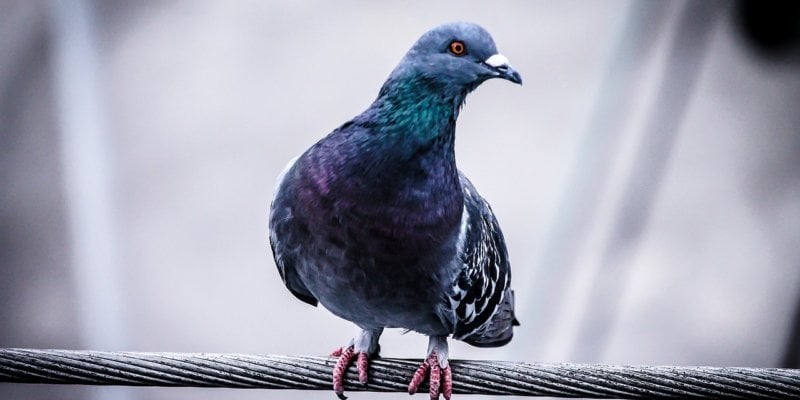Dark Truth Behind the Milk Myth
The escalating rate of violence and abuse to the animal world and aquatic lives is on the rise, as a result of which, climate change, ecological crisis and environmental pollution are threatening the entire human race, making it a matter of grave concern, especially for those who are conscientiously aware. Those who are slumbering in ignorance do not realize that when any life is threatened, other lives are also at risk. It is all very well to say that an individual must wrestle with his or her conscience, but only if his or her conscience is awake and informed. Industrial society, alas, hides animals’ suffering and does not allow the conscience to be awakened.
When we observe in minute detail the environment around us, we see that even nature sees the whole universe as a great cosmic mechanism with its own self-propelling force. We are part of that mechanism and responsible for conducting ourselves in harmony and rhythm with nature and all other living beings. It is important to know that each of us is a vital thread in another’s life tapestry and that our lives are woven together for a reason, the reason being to survive and live in peace and help others live in peace and harmony.
In this article, the main focus is the dairy industry. The information below lifts the lid on modern dairy farming, shattering its benign image and exposing the immeasurable mental and physical suffering inflicted on millions of cows and their calves every year. It serves as a wake-up call for everyone who is opposed to cruelty to animals yet who continues to buy and consume dairy products. The time has come to enlighten the readers and awaken them to the truth about the torturous lives of animals in dairies and learn about their horrifying conditions!
The Myth Behind Milk
“Yes … milk is Mother Nature’s ‘perfect food’ … for a calf … until the calf is weaned. Everything you know about cow’s milk and dairy is probably part of a dairy industry MYTH”, says Dave Rietz (webmaster of www.notmilk.com)
It is now time to remove the myth and face the truth so that one can see how much suffering is involved in one glass of milk. Each sip contains growth hormones, fat, cholesterol, allergenic proteins, blood, pus, antibiotic, bacteria and virus.
To keep producing milk for human consumption, a cow must produce a calf each year. In order to keep a steady supply of milk, the cows are repeatedly impregnated.
Although cows would naturally make only enough milk to meet the needs of their calves (around 16 pounds a day), genetic manipulation, antibiotics, and bovine growth hormones (BGH) are used to force each cow to produce more than 18,000 pounds of milk a year (an average of 50 pounds a day) (National Agriculture Statistics Service, 2004 Feb 17, “Milk Production”. US Department of Agriculture). The hormones adversely affect the cows’ health and increase the rate of birth defects in their calves. BGH may also increase the risk of developing breast and prostate cancer in humans.
Several times a day, cows are hooked by their udders to electronic milking machines, which can cause the cows to suffer electrical shocks, painful lesions and mastitis. Their udders become sore and heavy with the milking machines and often touch the floor.
Some spend their entire lives standing on concrete floors; others are crammed into massive mud lots.
Cows have a natural lifespan of about 20 to 25 years and can produce milk for 8 or 9 years. But the stress caused by factory farm conditions leads to disease, lameness and reproductive problems that render cows worthless to the dairy industry by the time they are 4 or 5 years old, at which time they are sent to the slaughterhouse.
What Happens to the Calf
Calves are taken from their mothers within 12 to 24 hours of birth. If nature was allowed to take its course—calves would suckle from their mother for several months, even up to a year. Mother cows, like most mammals, have a strong maternal bond. One study found that this bond was formed in as little as five minutes, says Frances C Flower and Daniel M Weary in “Effects of Early Separation on the Dairy Cow and Calf”.
When calves are removed, mother cows frantically bellow for the offspring they will never see again. Separated calves appear frightened and bewildered. Regardless of how this situation is handled, this separation causes enormous stress for both the cow and the calf.
New mothers are returned to the milking herd to maximise profits. The milk that nature intended for the calf is then processed for human consumption.
Cruelty to a Veal Calf in a Crate
Few consumers realize that veal (meat from a calf) is a direct by-product of the dairy industry. In order for cows to produce milk, they must be impregnated. While female calves are slaughtered or added to the dairy herd, many male calves are taken from their mothers when they are as young as 1 day old and chained in tiny stalls to be raised for veal.
Veal calf confinement is so extreme that they cannot even turn around or lie down comfortably. As author John Robbins notes, “The veal calf would actually have more space if, instead of chaining him in such a stall, you stuffed him into the trunk of a subcompact car and kept him there for his entire life.”
Many veal calves are deliberately kept anemic in order to produce light-coloured meat, which fetches higher prices in restaurants. Their liquid-based, iron-deficient diets cause numerous health problems. Motherless and alone, they suffer from ulcers, diarrhoea, pneumonia and lameness.
After three to 18 weeks of this deprivation, they are trucked to the slaughterhouse, where their young lives are taken from them.
Cows are extremely gentle and affectionate animals, forming strong bonds with one another, particularly between mother and child. As Michael Klaper, MD, recalls, “The very saddest sound in all my memory was burned into my awareness at age five on my uncle’s dairy farm in Wisconsin. A cow had given birth to a beautiful male calf. … On the second day after birth my uncle took the calf from the mother and placed him in the veal pen in the barn—only ten yards away, in plain view of his mother. The mother cow could see her infant, smell him, hear him, but could not touch him, comfort him, or nurse him. The heartrending bellows that she poured forth—minute after minute, hour after hour, for five long days—was excruciating to listen to. They are the most poignant and painful auditory memories I carry in my brain.”
Health Impacts of the Dairy Industry
Giving up dairy products is easy on the health of the body and the soul. Dairy-free diets are credited with lowering the risk of colon cancer, heart attacks, high cholesterol, high blood pressure, prostate cancer, strokes, diabetes, etc.
Cows’ milk is the number one cause of food allergies among infants and children, according to the American Gastroenterological Association. Most people begin to produce less lactase, the enzyme that helps with the digestion of milk, when they are as young as 2 years old. This reduction can lead to lactose intolerance. Millions of Americans are lactose intolerant, and an estimated 90 per cent of Asian-Americans and 75 per cent of Native- and African-Americans suffer from the condition, which can cause bloating, gas, cramps, vomiting, headaches, rashes and asthma. A UK study showed that people who suffered from irregular heartbeats, asthma, headaches, fatigue and digestive problems showed marked and often complete improvements in their health after cutting milk out of their diets.
The Myth About Organic Milk
“Organic” simply means drug- and chemical-free. “Organic” animals can be subjected to all the same types of cruelty that occur on factory farms, and as long as they are not dosed with drugs or fed food that was treated with pesticides, their meat and milk can be labelled “organic”. However, because farmers are accustomed to dosing animals with drugs to make them grow larger and increase their profit margin, very few have been willing to go chemical- and drug-free.
According to the US Department of Agriculture, less than 1 per cent of animals raised for meat in the US meet the criteria for the organic label. Among the farms that are chemical-free, some may continue to dose animals with drugs and then fraudulently label their animal products as organic. Animals on organic farms often suffer through the same mutilations that occur on factory farms. Cattle have their horns sawed off and their testicles cut out of their scrotums, and they’re held down and branded with sizzling-hot irons, resulting in third-degree burns.
Effect of Dairy Industry
With rising temperatures, rising sea levels, melting icecaps and glaciers, shifting ocean currents and weather patterns, climate change is the most serious challenge facing the
“A single dairy cow produces about 120 pounds of wet manure per day, which is equivalent to the waste produced by 20–40 people. That means California’s 1.4 million dairy cows produce as much waste as 28–56 million people.”– US Environmental Protection Agency, “Notes From Underground,” Fall 2001
Animal agriculture is linked to climate change, water pollution, land degradation and a decline in biodiversity. Additionally, an animal-based diet uses more land, water and energy than an animal-free diet.
Indian Dairy Industry
Today, the cows and buffaloes used for dairy in India also go through the same alarming fate as their counterparts in western countries, becoming milking machines for human beings.
The cows and buffaloes are kept pregnant every year for 6 to 7 years consecutively via artificial insemination.
As soon as a cow stops yielding milk, she is sent to the slaughterhouse for beef meat.
Newborn calves are deprived of the mothers’ milk that is rightfully theirs. They are fattened by hormone injections and kept in dark sheds, away from sunlight and in oppressive conditions, preparing them to become veal meat.
A cow’s milk is intended for her calf but is usually consumed by human beings. To obtain 1 litre (approximately 1.75 pints) of milk, 2,000 litres of water are used, depleting the water resources in the country.
The conclusion is that dairy farming inflicts unacceptable and unavoidable pain and suffering on cows and their calves.
To counteract this violence against these voiceless animals, great seers have reiterated again and again the importance of love and compassion. That is why since time immemorial, the core teaching of Sarva Dharma (all religions) remains Ahinsa, and that is why all its practitioners are vegetarians consuming no meat, fish, fowl, poultry, seafood or eggs.
In the olden days, people used to drink milk because the milk-giving animals were raised and treated as family members, where the babies were allowed to suckle the milk of their mother and were not separated from their mothers. They were allowed to graze freely in the pastures and were not confined to pens where they could not move freely.
But today, the story is very different. The extensive abuse caused to the dairy animals and the torturous lives of dairy cows and their calves have changed the idealistic image of the past. Knowing this has encouraged and inspired individuals to take one step forward to join those millions all over the world to adopt a vegan life style.
What Is Veganism?
The word “veganism” denotes a philosophy and way of living which seeks to exclude – as far as is possible and practical – all forms of exploitation of, and cruelty to, animals for food, clothing or any other purpose, and by extension, it promotes the development and use of animal-free alternatives for the benefit of humans, animals and the environment. In dietary terms, it denotes the practice of dispensing with all products derived wholly or partly from animals. (“Memorandum of Association of the Vegan Society”. About Us 1. Vegan Society, Nov 1979). Retrieved Feb 2007.)
Vegans live on plant-based food, so they exclude flesh, fish, fowl, poultry, seafood, dairy products (such as animal milk, butter, cheese, yogurt/curd and ice cream), eggs, honey, animal gelatine and all other items of animal origin, like leather, silk, wool, pearl, etc.
Every kind of milk, whether it is from humans, cows, dogs, elephants, camels, etc, is formulated to meet the specific growth needs of a young being. For example, there is a big difference between human babies and calves. Cows’ milk is 15 per cent protein, while human milk is 5 to 7 per cent protein. Additionally, it takes about 45 days for a calf to double his or her birth weight and about 180 days for a human infant to double his or her birth weight. Humans are the only mammals who consume milk after infancy and from a different species!
Cows’ Milk Is Not a Mothers’ Milk Replacement!
Another aspect of not being aligned with the natural cycle is that human mothers’ milk is designed for the nervous system of infants, and cows’ milk is more designed to grow a calf. Cows’ milk is four times higher in protein than human milk. It is designed for the massive skeletal and muscle growth which a 400-pound cow needs. Human milk has six to 10 times the essential fatty acids, especially linoleic acid and DHA, which is needed for human brain development and overall nervous system development. One research study showed that breastfed children had 10 points higher IQ than children not given human mothers’ milk.
The most common reasons for one becoming vegan is also an ethical commitment or moral conviction concerning animal rights, the environment, human health and spiritual or religious concerns. Of particular concern are the practices involved in factory farming, animal testing and the intensive use of land and other resources required for animal farming.
People who adopt veganism for environmental reasons do so because veganism consumes far fewer resources and causes less environmental damage than an animal-based diet.
The Spiritual Aspect
The heart of Dharma is reverence for all life, ie, Ahinsa. Ahinsa is a term meaning “to do no harm”, having empathy and feeling others’ pain. It is an important tenet of the religions that originated in ancient India (Hinduism, Buddhism and Jainism).
Ahinsa is the first rule of conduct that bars the killing or injuring of living beings. It is connected with the law of cause and effect that all kinds of violence entail negative karmic consequences. When the animals are killed, mutilated, tied by force, loaded with heavy loads or kept hungry, one actually commits the violation of the first vow of not killing and lapses the code of conduct.
Therefore, the adherents believe that when the calves go hungry without a drop of milk, the human becomes the cause for their hunger and untimely death, which creates negative vibrations. To do anything hurtful, to encourage others to do so or to appreciate others’ doing it results in the same attraction of negative karmas.
When the cow, the buffalo or the calf is not allowed to live his or her destined life and if that life is abruptly ended in agony, the human becomes responsible for the same fate in his or her own life. It is not surprising when this affects the longevity karma of the person. By reducing the longevity of others, we reduce our longevity.
The spiritually aware believe that to take anything without the permission of the owner is a theft. We have not taken permission from the cow to take her milk, have we? We are violating another principle of Dharma, ie, not stealing.
When the mother is separated from her baby by force, one acquires the karma of obstruction in one’s life.
For self-realization, all the great saints have emphasized renunciation of passion-creating foods in daily life. Since all animal products are passion-creating foods, one must eschew them.
It is shocking to hear intelligent people argue that the cows are not killed to get milk so it is OK to drink milk. These are the ones who are fearful of change and are not ready to give up their ill habits and thus defend themselves. They don’t realize that by taking milk and its products, one perpetuates endless violence, supporting the cruelty of the dairy industry.
Call of Compassion
If even after knowing the facts, we are not convinced about changing our food habits, then we need to question our beliefs and commitment to dharma. Dharma is the law of nature. The law of nature is cause and effect. What we sow, that we grow. Whatever suffering is caused to any living, feeling being, whether the being is human, animal, insect or any other form, comes back to us like a boomerang.
All these horrifying stories leave a compassionate heart restless and aching. If the above facts and truth leave your heart restless and evoke an emotion of compassion, do not ignore this as another piece of information to read and forget about. Think, ponder and then decide. It’s your life; it’s your choice. When you have a choice, make it a compassionate one, not an unthinking one.
One cannot be at peace if one is the cause of pain and suffering to innocent living beings.
A VEGAN lifestyle is one of the most imperative and effective actions one can take to ease the strain on our Earth’s limited resources, protect the planet from pollution, prevent climate change and save countless species from extinction.
Various Useful Links
• http://www.vegetarian.org.uk
• http://www.notmilk.com
• http://www.vegsource.com
• http://www.newstarget.com
• http://www.thechinastudy.com/
• http://www.milkmyths.org.uk/pdfs/dairy_report.pdf
• http://www.milkmyths.org.uk/intro.php
• http://www.vegetarian.org.uk/index.htm
• http://www.factoryfarming.org.uk/dairy.html
• http://www.vegansociety.com/html/animals/exploitation/cows/dairy_cow.php
• http://www.animalaid.org.uk/campaign/vegan/cattle01.htm
• http://www.halexandria.org/dward074.htm
• http://essenes.net/whyv.html
• http://www.naturalmom.com/milk.htm
• http://nomilk.com/
• http://www.spice-of-life.com/columns/bcancer.html
• http://themilkblog.blogspot.com/
• http://www.foodrevolution.org
Vegan Films
• “Raw for 30 Days”
Neal Bernard
• Colin Campbell
http://www.vegsource.com/video/colin.wmv.htm
• Earthlings
http://www.earthlings.com/
• “Peaceable Kingdom: The Journey Home”
http://www.peaceablekingdomfilm.org/
• “Meat Your Meat”
http://www.goveg.com/factoryFarming.asp
• Vegan Family
http://www.breakthroughthedocumentary.com
Vegan Books
• The No-Dairy Breast Cancer Prevention Program by Jane A. Plant
• Milk A-Z by Robert Cohen
• Don’t Drink Your Milk! by Frank A. Oski
• The Food Revolution by John Robbins
• The Milk Imperative by Russell Eaton (http://www.milkimperative.com/)
Alternative for Dairy Milk: Making Your Own Milks
Almond Milk
3/4 cup almonds, bleached
3 1/4 cups water
2 Tbsp. sweetener
1/4 tsp. salt
1 tsp. vanilla
1/4 cup soyagen
• Blend the almonds with a small amount of the water first, then add the remaining water and ingredients.
• Blend until smooth.
• Strain, chill, and serve.
Cashew Milk Blend
1 cup cashew meal
1 cup hot water (add 1/4 tsp. salt)
1 tsp. vanilla
3 Tbsp. sweetener
3 cups water
• Blend all the ingredients until smooth.
• Chill and serve.
Rice Milk
2/3 cup hot cooked rice
1/3 cup cashew meal
1 tsp. vanilla
1/2 tsp. salt
1/2 Tbsp. sweetener
3 cups hot water
• Blend all the ingredients until smooth.
• Chill and serve.
Oatmeal Milk
2 cups cooked oatmeal
4 cups water
1/2 tsp. salt
1 ripe banana
1 tsp. vanilla
2 Tbs. sweetener
• Blend all the ingredients until smooth.
• Chill and serve.
Sesame Milk
1 cup sesame seeds, light
1/4 tsp. salt
2 cups water
1/4 cup sweetener
• Bring the sesame seeds and water to a boil.
• Simmer 10 minutes.
• Add the remaining ingredients, and blend until smooth.
• Chill and serve.
Note: Non-alcoholic vanilla is now available, extracted with vegetable glycerine.
These recipes are adapted from Jiv Daya Digest, issue July/September 1998.
